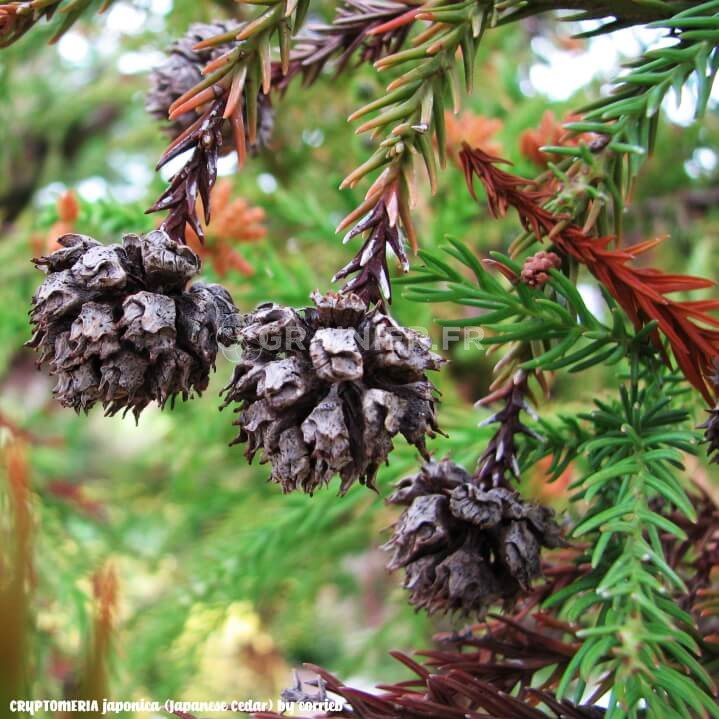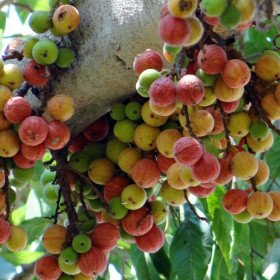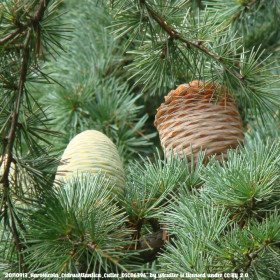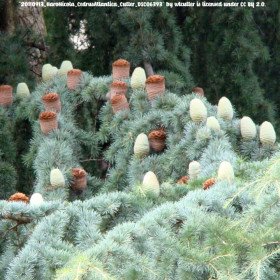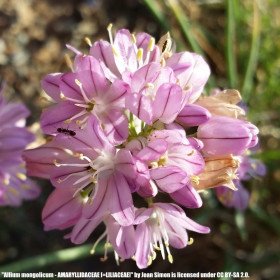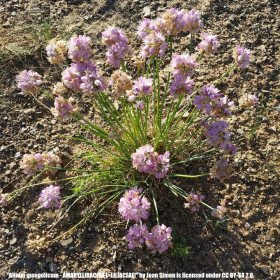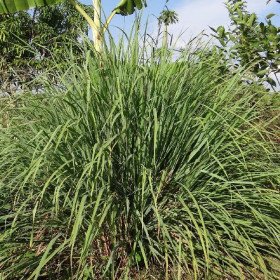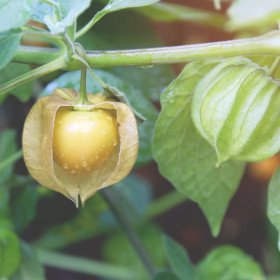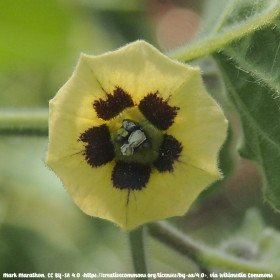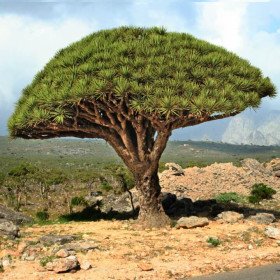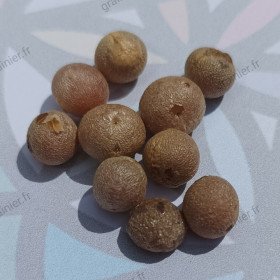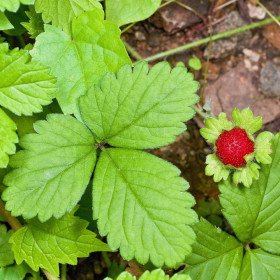20 Graines Cèdre du Japon, 杉 ,スギ, Sugi, Cryptomeria japonica
20 Graines Cèdre du Japon, 杉 ,スギ, Sugi, Cryptomeria japonica
- Modèle : 20 Graines Cèdre du Japon, 杉 ,スギ, Sugi, Cryptomeria japonica
- Disponibilité : INDISPONIBLE
- 1,50€
Me contacter dès que le produit est disponible
Cèdre du Japon, 杉 ,スギ , sugi, Cryptomeria japonica |
Le Cryptomère du Japon ou Cèdre du Japon (Cryptomeria japonica), en japonais 杉 (スギ : sugi), est une espèce de conifères proche parent du cyprès chauve2 (famille des Cupressaceae) originaire d'Extrême-Orient. C'est le seul membre du genre Cryptomeria. L'espèce est présente au Japon, en Chine et en Corée, ainsi qu'à l'île de La Réunion et aux Açores3.
20 graines - Germination moyenne : 14 % - Rusticité : - 10 °C - Tremper les graines 48 h dans l'eau à température ambiante/froide avant semis
Le cryptomère du Japon est un très grand arbre à feuilles persistantes atteignant 60 mètres, avec un tronc de 4 mètres de diamètre et une écorce rouge-brun qui pèle en bandes verticales. En France, il atteint 30 à 40 mètres de hauteur.
Les feuilles sont arrangées en spirale, comme des épines, de 0,5 à 1 cm de long et les cônes lécanie, 2 à 3 cm de diamètre avec 20 à 40 écailles légèrement imbriquées qui portent, sur leur face inférieure, des bosses blanches et jaunes d'où s'échappent en saison de nombreux grains de pollen. Ce pollen serait le principal responsable du rhume des foins japonais, le kafunshō (花粉症, litt. « maladie du pollen »). La longue persistance des branches rend indispensable l'élagage de pénétration. Il est superficiellement similaire au séquoia géant (Sequoiadendron giganteum), dont il peut être différencié par les écailles plus rapprochées du rameau6 et des cônes plus petits (4 à 6 cm pour le séquoia), et une écorce plus dure (épaisse, molle et spongieuse pour le séquoia).
Le sugi 杉 est l'arbre national du Japon, où il est communément planté autour des temples, avec de nombreux sujets impressionnants plantés il y a des siècles. Sargent (1894; la flore de la forêt au Japon) rapporte les circonstances d'un daimyo qui était trop pauvre pour donner une lanterne en pierre aux funérailles du Shogun Ieyasu Tokugawa (1543-1616) à Nikko, mais demanda à la place à être autorisé à planter une allée de sugi. Les visiteurs dans l'avenir pourraient être protégés de la chaleur du soleil. L'offre fut acceptée ; l'avenue qui existe encore s'étend sur plus de 65 km.
Le sugi est également le bois local le plus répandu dans les constructions traditionnelles. Il est notamment utilisé pour les poteaux décoratifs dans les pièces de style japonais. Dans les montagnes du nord de Kyoto, il est connu comme Kitayama sugi et cultivé pour former des poteaux parfaits, bien droits aux fibres rectilignes, de manière à répondre aux exigences des charpentiers japonais8.
Le cryptomère du Japon est souvent décrit et figuré dans la littérature japonaise. Ainsi, par exemple, dans le célèbre roman Kyôto du Prix Nobel Yasunari Kawabata, dont un des personnages habite et travaille dans une forêt de cryptomères située dans les montagnes du nord de Kyoto, là où est née la tradition du Kitayama sugi.
Il est aussi planté abondamment en Corée et en Chine, et comme arbre ornemental dans les autres pays à climat tempéré (il craint le gel). L'une des formes les plus populaires est la version cultivée Elegans qui a la particularité de garder son feuillage juvénile toute sa vie, au lieu de développer son feuillage adulte lorsqu'il atteint l'âge d'un an.
Le bois est parfumé, d'une couleur rose-rouge, léger mais fort, imputrescible et résistant à la décomposition[réf. nécessaire]. Il est souvent utilisé au Japon pour tous les types de construction ainsi qu'en panneaux d'intérieur, parfois traité selon la technique du Yakisugi.
En pot, notamment comme sapin de Noël ou en bonsaï, il a besoin de beaucoup d'humidité et jaunit s'il en manque ou si on le place en plein soleil.
Au Japon, l'arbre est responsable du kafunshō (花粉症, maladie du pollen), une pollinose qui touchait en 2015 25 millions de personnes, dont 40 % des habitants de Tokyo. Il serait notamment présent sur 22 000 des 31 000 hectares de forêt que compte la métropole de Tokyo9. Les Japonais s'en protègent avec des masques chirurgicaux et des lunettes de protection.
Contenu soumis à la licence CC-BY-SA 3.0. Source : Article Cryptomeria japonica de Wikipédia en français (auteurs)
Etiquettes : cedre, japon, sugi, cryptomeria, japonica, GRAINES DE FLEURS & ARBRES Cèdre du Japon, 杉, スギ, sugi, Cryptomeria japonica, Exotiques & Rares Cèdre du Japon, 杉, スギ, sugi, Cryptomeria japonica, Arbres & Bonsaï Cèdre du Japon, 杉, スギ, sugi, Cryptomeria japonica, Cèdre du Japon, 杉, スギ, sugi, Cryptomeria japonica GRAINES DE FLEURS & ARBRES, Cèdre du Japon, 杉, スギ, sugi, Cryptomeria japonica Exotiques & Rares, Cèdre du Japon, 杉, スギ, sugi, Cryptomeria japonica Arbres & Bonsaï

